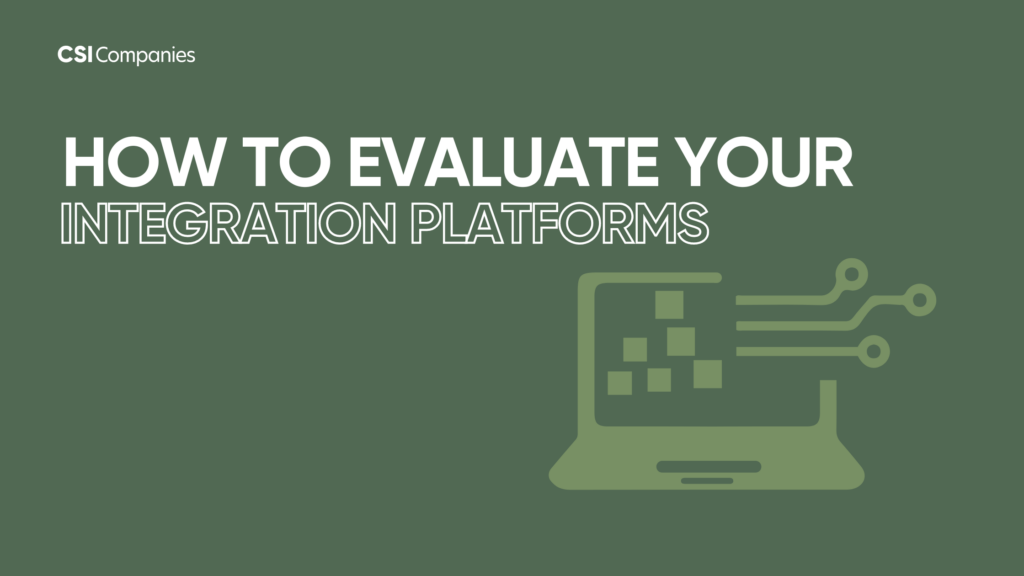
In today’s interlinked world, integration, and seamless data exchange have become crucial for thriving businesses. Integration platforms play a pivotal role in enabling organizations to connect disparate systems, streamline processes, and unlock the potential of data.
However, with many options available in the market, selecting the right platform for your business can take time and effort. This blog offers a thorough guide to assessing integration/API platforms. It will help you decide what aligns with your company’s needs and goals.
Table of Contents
Stats Regarding the Importance of APIs and Integrations
According to a survey by Mule Soft, 91% of IT leaders believe integration is crucial to their company’s digital transformation efforts. Organizations that implement effective integration strategies experience a 31% increase in operation efficiency, as reported by the Aberdeen Group.
A study by IBM found that companies using integration technologies achieved a 26% higher revenue growth rate than their competitors. Organizations use an average of 1,000 applications and systems. This shows the complexity of business operations and the need for powerful integration features (Okta Businesses at Work Report).
According to a survey by Mule Soft, 91% of IT leaders believe integration is crucial to their company’s digital transformation efforts. Organizations that implement effective integration strategies experience a 31% increase in operation efficiency, as reported by the Aberdeen Group.
Gartner predicts that by 2024, iPaaS will be the basis of more than 65% of companies’ application integration strategies. Companies that leverage APIs strategically generate 50% of their revenue from digital channels, as reported by McKinsey & Company.
Assessing Integration Requirements and Use-Cases
Before you go into the evaluation process, you’ll need to be able to understand your company’s unique integration needs. Identify the systems and applications that need integration. Consider the volume and complexity of data changes.
Look at security and compliance requirements. Evaluate your efficiency expectations. Think about future growth plans.
This preliminary assessment will serve as the foundation for your evaluation criteria. Please make sure to include future roadmap requirements in the evaluation criteria.
Connectivity Capabilities
Look for integration/API platforms that offer a wide range of connectivity options, especially for systems in your IT landscape. Assess their support for protocols (REST, SOAP, MQTT, etc.), data formats (XML, JSON, CSV), message queues, and batch processing capabilities. Consider whether the platform supports cloud-based and on-premises integrations, ensuring an agreement with your existing infrastructure.
Ease of Use and Developer Experience
An intuitive and user-friendly interface is essential for efficiently utilizing the integration/API platform. Search for features like a visual designer for building integration workflows. Look for drag-and-drop capabilities, real-time monitoring, and debugging tools. The platform should empower technical and non-technical users to collaborate effectively and simplify the integration process.
Efficiency and Performance
Consider your company’s current and future efficiency requirements when evaluating integration/API platforms. Ensure that the platform can handle the expected volume of data and transactions without compromising performance (batch processing). Look for features that guarantee smooth operations during peak loads. These features include load balancing, horizontal scaling, and high availability and fault tolerance support.
Security and Compliance
Data security is of utmost importance when dealing with integration/API platforms. Evaluate the platform’s security features, such as encryption, token-based confirmation, role-based access control, and data masking.
Think about compliance requirements specific to your industry, such as HIPAA or GDPR. Ensure the platform adheres to relevant regulations. This will help you to avoid legal or data privacy issues.
Monitoring and Analytics
Comprehensive monitoring and analytics capabilities are crucial for gaining visibility into integration processes and identifying bottlenecks or performance issues. Look for features like real-time dashboards, alerts, logging, and reporting to track the health and performance of integrations. The platform should provide actionable insights that enable proactive troubleshooting and optimization.
Integration patterns and Orchestration
Look into the integration patterns supported by the platform, such as point-to-point, publish-subscribe, request-response, and more. Evaluate if the platform allows for complex orchestration of workflows, including conditional logic, error handling, and transformation capabilities. Creating reusable integration templates and managing dependencies efficiently can significantly enhance productivity.
Deployment and Lifecycle Capabilities
Integration/API platforms should offer robust deployment and lifecycle capabilities to ensure long-term success and manageability.
Evaluate if the platform offers deployment flexibility. This includes on-premises, cloud-based, and hybrid deployments. Ensure that these options align with your infrastructure requirements.
DevOps enablement is key. Look for platforms that integrate well with DevOps practices. These should support CI/CD pipelines, version control systems, and automation tools. This will allow for streamlined development and deployment.
Ensure the platform has strong version control and change management features. This will give better governance, traceability, and effective collaboration.
We must assess the platform’s capacity. We must evaluate its ability to create and implement regulations, handle connections, and ensure adherence throughout the integrations’ lifespan.
Total Cost of Ownership
Consider the total cost of ownership (TCO) when evaluating integration/API platforms. Assess the costs involved in using the software beyond the initial licensing or subscription fees. Consider maintenance and support fees, training expenses, and potential costs of scaling or adding new integrations. Ensure that the platform provides sufficient value and ROI for your organization.
The Importance of Evaluation
Selecting the right integration/API platform is a critical decision that can significantly impact your company’s efficiency, productivity, and competitive advantage. Evaluate and compare different platforms using this comprehensive evaluation guide. This will help you make an informed choice that meets your company’s integration requirements, technical capabilities, and future growth plans. Investing time and effort into evaluation upfront can save you from potential integration challenges and ensure a successful implementation.



